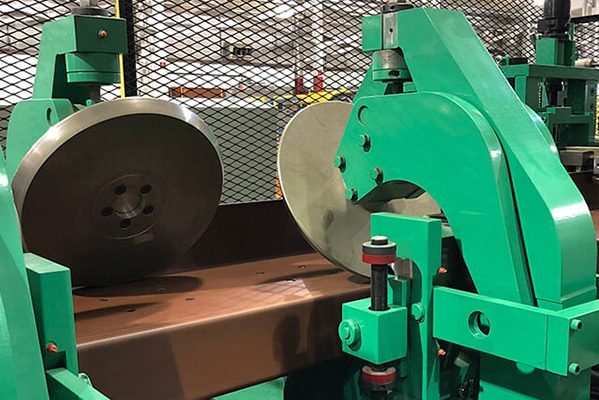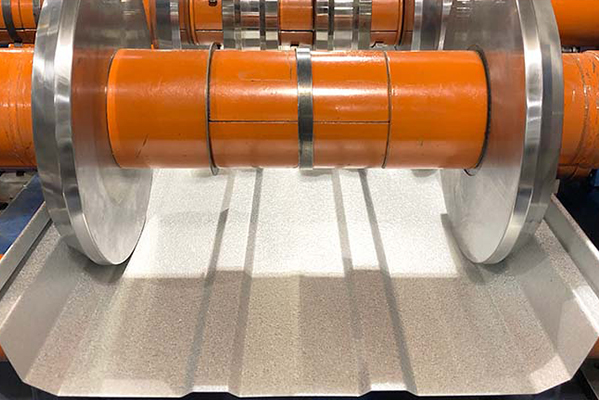Navigation Menu
Contact Us
- Email:
- info@wxavatar.com
- Address:
- Yurong Village, Yuqi Street, Huishan District, Wuxi, China.
Release Date:Apr 01, 2025 Visit:49 Source:Roll Forming Machine Factory
Purlin roll forming equipment is essential for efficient metal fabrication, but its operation involves potential hazards that can lead to injuries, equipment damage, or production delays. Ensuring workplace safety requires understanding these risks and implementing proper precautions. This article outlines the key hazards associated with purlin roll forming machines and provides safety measures to minimize risks.
1. Mechanical Hazards
Potential Risks:
• Pinch Points & Crushing Injuries – Workers’ hands or clothing can get caught between rollers, gears, or moving parts.
• Shearing & Cutting Hazards – The cutting mechanism (hydraulic or servo-driven) can cause severe injuries if safety guards are missing.
• Rotating Parts – Unprotected drive systems, shafts, and belts pose entanglement risks.
Preventive Measures:
✔ Install safety guards and emergency stop buttons.
✔ Ensure lockout/tagout (LOTO) procedures during maintenance.
✔ Provide operator training on safe machine handling.

2. Electrical Hazards
Potential Risks:
• Electric Shock – Faulty wiring, exposed terminals, or improper grounding can lead to electrocution.
• Short Circuits & Fires – Overloaded circuits or damaged cables may cause electrical fires.
Preventive Measures:
✔ Regularly inspect wiring and insulation.
✔ Use ground fault circuit interrupters (GFCIs).
✔ Ensure only qualified electricians handle electrical repairs.
3. Material Handling Risks
Potential Risks:
• Coil Recoil Danger – Metal coils can suddenly unwind, causing whiplash injuries.
• Sharp Edges – Cut purlins may have burrs or sharp edges, leading to cuts.
• Heavy Loads – Improper lifting of coils or finished purlins can cause strains or crushing injuries.
Preventive Measures:
✔ Use coil cars or decoilers with tension control.
✔ Provide cut-resistant gloves for handling metal sheets.
✔ Train workers in proper lifting techniques or use forklifts/cranes.
4. Noise and Vibration Hazards
Potential Risks:
• Hearing Damage – Prolonged exposure to loud machinery (over 85 dB) can cause hearing loss.
• Hand-Arm Vibration Syndrome (HAVS) – Workers operating handheld tools near the machine may develop nerve damage.
Preventive Measures:
✔ Install noise-dampening enclosures.
✔ Provide ear protection (earplugs or earmuffs).
✔ Use anti-vibration gloves for handheld tools.
5. Ergonomic Hazards
Potential Risks:
• Repetitive Strain Injuries (RSI) – Operators performing repetitive tasks may develop musculoskeletal disorders.
• Poor Posture – Bending or overreaching while loading/unloading materials can cause back injuries.
Preventive Measures:
✔ Implement ergonomic workstations with adjustable heights.
✔ Rotate job tasks to reduce repetitive motions.
✔ Encourage stretching breaks for workers.
6. Chemical and Dust Exposure
Potential Risks:
• Metal Dust Inhalation – Grinding or cutting can release harmful particles.
• Lubricant Exposure – Oil mist or grease may cause skin irritation or respiratory issues.
Preventive Measures:
✔ Use local exhaust ventilation (LEV) systems.
✔ Provide respirators and protective clothing.
✔ Ensure proper storage and handling of lubricants.

7. Fire and Explosion Risks
Potential Risks:
• Combustible Metal Chips – Accumulated dust can ignite under high heat or sparks.
• Hydraulic Fluid Leaks – Flammable fluids near electrical components increase fire risks.
Preventive Measures:
✔ Keep work areas clean and free of metal debris.
✔ Store flammable materials in designated areas.
✔ Install fire extinguishers (Class D for metal fires).
Conclusion Operating purlin roll forming equipment safely requires awareness of mechanical, electrical, ergonomic, and environmental hazards. By implementing proper machine guarding, training programs, PPE (personal protective equipment), and maintenance protocols, manufacturers can significantly reduce workplace accidents. A strong safety culture ensures both worker protection and operational efficiency.